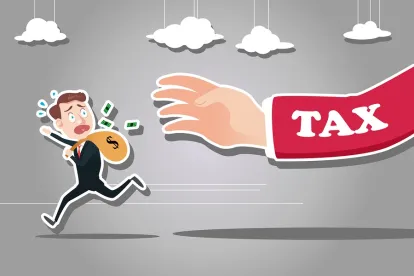Physical Presence Test Rejected
In South Dakota v. Wayfair, Inc., 585 U.S. (2018), the United States Supreme Court overruled the bright-line physical presence test set forth in Quill Corp. v. North Dakota, 504 U.S. 298 (1992) (which reaffirmed the conclusion of a similar holding from National Bellas Hess, Inc., v. Department of Revenue of Ill., 386 U.S. 753 (1967)).
As illustrated from the dates of the precedents identified above, for more than 50 years, United States Supreme Court precedent has required the application of a bright-line physical presence test to state use tax collection requirements. Under this test, a seller with no physical presence in a taxing state could not be required to collect and remit sales or use tax on sales it made to customers in that state. In rejecting the physical presence rule, the court highlighted the need to overrule Quill and National Bellas Hess by noting:
"[T]he physical presence rule is artificial in its entirety."
"Though Quill was wrong on its own terms when it was decided in 1992, since then the Internet revolution has made its earlier error all the more egregious and harmful."
"Between targeted advertising and instant access to most consumers via any internet-enabled device, a business may be present in a State in a meaningful way without that presence being physical in the traditional sense of the term."
The Economic Impact of the Physical Presence Rule
In many states, although the customers would be legally responsible for remitting use tax on purchases from out-of-state sellers, the lack of a tax collection requirement at the seller's level led to extensive underreporting and payment of the consumer's use tax. As electronic commerce experienced tremendous growth over the last two decades, state revenue departments and some businesses began to criticize the National Bellas Hess and Quillprecedents. States have argued that the physical presence test results in a crippling loss of tax revenue because it is impracticable to achieve consistent use tax collection from individual customers. Small businesses with local storefronts and large retailers with widespread physical presence have decried the competitive disadvantage they face in comparison to online retailers that are not required to charge sales tax and can thereby offer lower prices. In fact, the court's majority opinion focused on this issue when it specifically referenced the advertising statement from Wayfair that "[o]ne of the best things about buying through Wayfair is that we do not have to charge sales tax."
Application of the Wayfair Decision
The rejection of the historic physical presence test leads to the conclusion that an economic presence can be sufficient to create the substantial nexus required under Complete Auto Transit v Brady, 430 U.S. 274 (1977). Under Complete Auto, a state generally may impose a tax on interstate commerce if: (1) the activity being taxed is sufficiently connected to the taxing state (also referred to as substantial nexus with the taxing state), (2) the tax is fairly related to the benefits provided by the state, (3) the tax is fairly apportioned, and (4) the tax does not discriminate against interstate commerce. The Wayfair decision published today addressed only one of these four requirements; therefore, for Wayfair this holding does not result in a conclusion as the case now must return to the trial court for a determination whether the tax at issue satisfies the remaining three requirements.
In addition, the application of the Wayfair decision likely will not provide complete answers to questions for other taxpayers. Instead, taxpayers in most cases will need to review their filing and tax collection obligations under the Complete Auto factors without the bright-line physical presence test. And while the court in Wayfair concluded that a statutory threshold of more than 200 transactions or more than $100,000 in sales constitutes substantial nexus, the court did not provide definitive guidance regarding the potential application of other statutory thresholds.
Final Note: Voting Groups
The court's opinion in Wayfair was a 5-4 decision authored by Justice Kennedy and joined by Justices Thomas, Ginsburg, Alito and Gorusch. Justices Thomas and Gorusch filed concurring opinions. Chief Justice Roberts filed a dissenting opinion joined by Justices Breyer, Sotomayor and Kagan.





 />i
/>i
